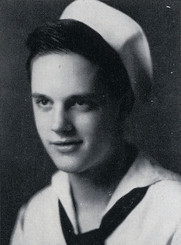History (Sadly) Repeats Itself Boomer Boner More Tales of a Table
January 2011
| There are seven members of the Board of Directors of American Heritage Publishing: Robert L. Breeden, Chairman Dr. Bruce Cole Edwin S. Grosvenor Samuel C. O. Holt Scott Masterson Dr. Allen Weinstein Robert C. Wilburn |
|
Robert L. Breeden, Chairman |
A new book by the eminent western historian and A MERICAN H ERITAGE contributor Mari Sandoz may prove to be the definitive account of Ouster’s defeat. The Battle of the Little Bighorn, to be published in May by J. B. Lippincott, relates in scrupulous detail the events that led up to the battle, the hand-to-hand fighting in which Custer died, and the subsequent struggle between the Indians and the remnants of Custer’s command under Reno and Benteen. Finally, in a chapter from which the following excerpt is taken, Miss Sandoz describes the frightful scene that greeted the troops of General Alfred Terry and Colonel John Gibbon as they arrived two days later upon the silent field.
Among those who came to the aid of the Union when the Civil War broke out was François Ferdinand Philippe Louis Marie, Prince de Joinville, the third son of the exiled King of France, Louis Philippe. The Prince was doubly gifted, as both soldier and artist. A MERICAN H ERITAGE herewith present the story of his visit, recounted by a distinguished French novelist and essayist, along with a porfolio of the Prince’s water colors. Both recently appeared in a limited edition of A Civil War Album of Paintings by the Prince de Joinville ; together they give a fresh, behind-the-line glimpse of an ill-prepared nation fighting for its life.
How many men, from how many nations, voyaged to the American continents before Columbus? Norsemen certainly, around 1000 A.D. Possibly other Ediropeans, by design or accident. And, it seems quite likely, a Ruddhist named tiwm Shan, in 458 A.D. He left a written record. After the ludicrous uproar last October over the Vinland Map (which we published jointly with the Yale University Press) it seems wise to remind the ethnically sensitive that this is not a new story, although modern archaeological studies in Mexico seem to be adding new evidence to back up old conjectures.
One moonless spring night in 1775 a young couple crept quietly out of their house on Cornhill in Boston and ran for a waiting carriage. It bore them away through dark streets toward Boston Neck. Each moment they expected to hear a sentry’s challenge, but none came and soon they were across the Charles River bound for the headquarters of the American forces at Cambridge. The young man, Henry Knox, bookseller, was one whose name appeared on Governor Gage’s list of suspected rebels who must not be permitted to leave Boston: his eighteen-year-old wife was the daughter of the Royal Secretary of the Province of Massachusetts Bay. She carried her husband’s sword sewn into the quilting of her cloak.

